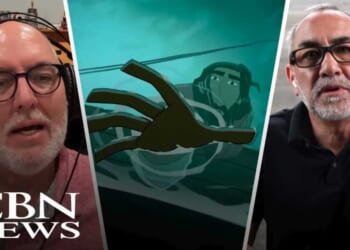It is universally acknowledged that American higher education is in trouble. Enrollment is lower than 15 years ago, college campuses are often in turmoil, and more schools are closing or merging with competitors. I would submit that there is a financial crisis, an integrity crisis, and a leadership crisis. Until major problems in all three dimensions are addressed, America’s universities are likely to remain in trouble.
The Financial Crisis
After 2010, college enrollments started to decline rather steadily until very recently. Falling demand forced colleges to reduce their tuition fees in a disguised way, leaving sticker prices high but dramatically increasing the discounting of those fees. Simultaneously, the robust historical growth in federal research funds abated considerably. Yet college spending on fashionably woke causes grew robustly, reflected in growing administrative bloat, most notably in the exploding area of “diversity, equity, and inclusion” (DEI) initiatives. (RELATED: College Is Too Expensive These Days to Allow Students to Fail)
Trump administration initiatives in recent months demonstrate how vulnerable universities, including highly endowed so-called “private” institutions, are to changing federal policies…
Trump administration initiatives in recent months demonstrate how vulnerable universities, including highly endowed so-called “private” institutions, are to changing federal policies — reducing administrative overhead allowances on research grants, more restrictive rules on issuing foreign student visas, expanded taxes on large endowments, and even talk about changing accreditation standards. As polling data show plummeting public support for universities, the political calculus of funding universities changes at both the state and federal levels. Giving more public dollars to universities is moving increasingly from being politically smart to being costly, threatening legislative job security. A likely near-term decline in the rate of economic growth likewise makes maintaining public university funding more problematic.
The decline in college interest has been particularly acute among males. In 2022, near the peak of the modern Collegiate Woke Ascendency, 57.2 percent of new male high school completers entered college, dramatically down 10.3 percentage points from the 67.5 percent just six years earlier. For women, the decline was from 71.9 to 66.0 percent, a much smaller 5.9 percentage point decline. The stories of brutish white male aggression accompanying some woke narratives seemed to especially turn off men weary of a new Collegiate War Against Men. (RELATED: Higher Education’s 7 Deadly Sins)
To date, the annual college closure list has been measured in the low two digits-maybe 20 schools, but some of those schools are fairly substantial. For example, in 2022, three Pennsylvania state schools, California University, Clarion University, and Edinboro University, with combined enrollment well over 10,000 students, merged to form a new “Pennsylvania Western University.” If the recent Trump administration moves are combined with a recession-induced decline in government revenues and student college interest, the potential for greater college closures is substantial.
Short of closure, many institutions, including some prominent ones like the University of Chicago and the University of Arizona, have announced significant cuts in programs as the aspirations and expectations of earlier times collide with the reality of today. To cite one example, Wright State University in Dayton, Ohio, had 16,393 students 35 years ago (the fall of 1990). This fall, it probably has about 10,000, with some of those being high school students doing a very limited amount of college work. In 1990, it had a history department; today, it has one individual teaching American history — the school has not died, but it seems like it has a cancer that may be terminal. One professor friend of mine there, Jonathan Winkler, likens it to the decline of Sears. Higher endowment taxes, declining public support, falling fertility rates, and a slowing in economic growth all suggest that near-term aspirations of academic expansion or enhanced programmatic excellence are not likely to be realized.
Declining Academic Integrity
The saddest contemporary trend in higher education, to me, is what I see as a decline in academic integrity and honesty. I have said, only somewhat jokingly, that I would trust buying a used car from a randomly selected name on some big city’s voter registration list than from the typical university president. There are too many lying and misleading narratives happening on campus.
Nowhere has academic dishonesty probably been more shocking than regarding funded research. To win grants, achieve tenure, and get national acclaim, you usually not only have to publish in academic journals, but also say something that represents a real advance in knowledge. There has been an explosion in claims of fraudulent research results as well as academic plagiarism. Some journals have been so filled with fictitious results that they have been discontinued. (RELATED: Francesca Gino and the Rot at the Heart of Elite Academia)
The long-term problem has arisen largely because, in the late 20th century, wannabe graduate research powerhouse universities turned out large numbers of PhDs, more than was sustainable. This exacerbated the perceived need to “publish or perish,” which led to the creation of an extraordinary number of new journals, etc. Increasingly desperate young researchers started to cheat more, burying uninteresting research results and hyping increasingly false narratives. (RELATED: Let Colleges Fail: Use Creative Destruction)
The integrity problem has been building for years, reaching a scandalous level at the undergraduate instructional level with rampant grade inflation, where prestigious elite colleges claim that nearly all their students do superb top-flight work deserving of “A” or, at worst, “A-” grades. This, despite reliable workload data indicating that students on average spend less than 30 hours weekly on classwork. Doing less for more, in the process, lessening the reputation and integrity of the academic community, and the learning of students. (RELATED: The Outrageous Scandal That Should Be Rocking Higher Education)
A Leadership Crisis
As American universities falter, who is minding the store? Who runs, owns, controls, or dominates universities? That indeed arguably is the root of the problem: there is no clearly defined leader at most universities. The president? The governing board? Prominent donors and alumni? For public universities, the state government and its leaders (governor, legislators, state higher education department or coordinating board, etc.)? (RELATED: Another Ivy League University Living in Woke Fairyland)
The murkiness and uncertainty surrounding control of governance often lead to unproductive turf wars, clashes of priorities, etc. There are many different leadership models. There is the Articles of Confederation model: a few universities are like federations of semi-independent academic villages with relatively weak overall leadership. There is the King Louis XIV model: “L’ecole est moi!”, mostly smaller schools led and effectively controlled by a strong-willed president. The governing board at many, probably most, schools is viewed as an honorific group, much like the British monarchy or House of Lords, with lofty theoretical powers but largely meaningless appendages to school administration except when selecting a new president. (RELATED: Remember the College Treachery)
Unlike private for-profit businesses, there is no clear bottom line, no universally accepted way of measuring success or failure. Market forces exist in higher education, but public and private subsidies and grants often cushion leadership from the brutal consequences of managerial failure, and they stumble along on a path of mediocracy and even, increasingly, failure and death. (RELATED: Creative Destruction Comes to Universities)
There Are Even More Problems
This short assessment of higher education ignores many things — the gross waste and inefficiencies associated with campuses fully operating only eight or so months annually, the lack of meaningful accountability and assessment of achievement accompanying a totally dysfunctional and ineffective accreditation system, the increasingly bizarre, irrational, and expensive system of relating higher education to athletic entertainment. New AI technologies that let machines think threaten some forms of employment for college graduates. Perhaps above all, the increasing role of the federal government in trying to govern our universities threatens the potential advantages of high institutional diversity and even eccentricity — an American strength has been that students can find schools for almost any legitimate taste.
READ MORE from Richard Vedder:
Why Are People Fleeing Highly Educated States?
Blue States’ High Tax State-of-Mind
Improving Both Federal Finances and Economic Growth
Richard Vedder is a distinguished professor emeritus at Ohio University, senior fellow at both the Independent Institute and Unleash Prosperity, and author of Let Colleges Fail.




![Gavin Newsom Threatens to 'Punch These Sons of B*thces in the Mouth' [WATCH]](https://www.right2024.com/wp-content/uploads/2025/08/Gavin-Newsom-Threatens-to-Punch-These-Sons-of-Bthces-in-350x250.jpg)
![ICE Arrests Illegal Alien Influencer During Her Livestream in Los Angeles: ‘You Bet We Did’ [WATCH]](https://www.right2024.com/wp-content/uploads/2025/08/ICE-Arrests-Illegal-Alien-Influencer-During-Her-Livestream-in-Los-350x250.jpg)








